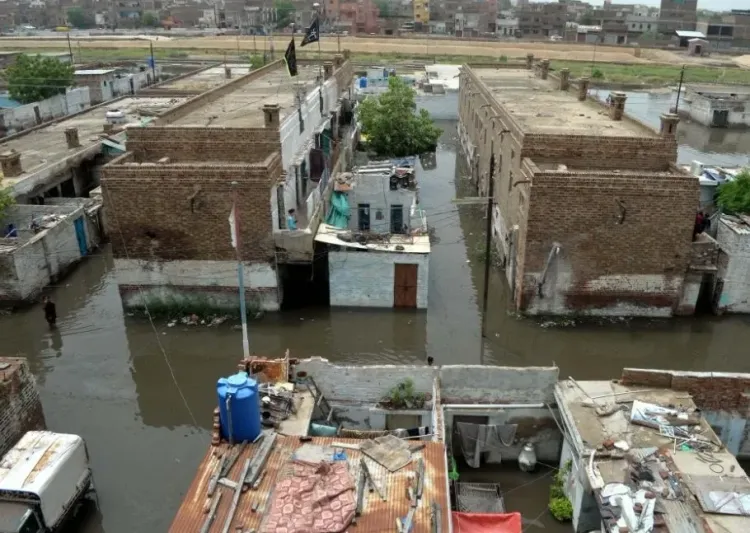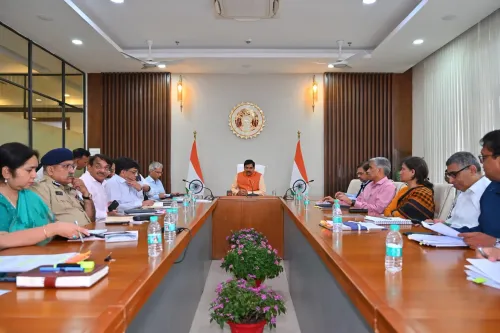How Many Lives Has the Monsoon Fury Claimed in Pakistan?

Synopsis
Key Takeaways
- Over 200 lives lost due to monsoon-related incidents.
- Children represent nearly half of the fatalities.
- Punjab is the most affected province.
- Urgent need for improved drainage systems highlighted.
- Nationwide alerts for flash floods issued until July 25.
Islamabad, July 20 (NationPress) Pakistan is currently facing severe challenges as the relentless monsoon season wreaks havoc, resulting in tragic loss of life and significant disruption throughout the nation.
The National Disaster Management Authority (NDMA) reports that the death toll has risen to at least 202 individuals since the onset of the rainy season, with children constituting nearly half of the fatalities.
Local reports indicate that 96 children are among those who have tragically lost their lives, underscoring the heart-wrenching nature of this crisis.
The province of Punjab has been the hardest hit, with 123 fatalities recorded. Khyber Pakhtunkhwa follows with 40 deaths, while Sindh reports 21 deaths, Balochistan 16, and both Islamabad and Azad Jammu and Kashmir have documented one death each, as per leading Pakistani media outlet Geo News.
The causes of these tragic losses highlight the perilous conditions across the region—at least 118 individuals died due to house collapses, 30 from flash floods, while others succumbed to drowning, lightning strikes, electrocution, and landslides.
With the torrential rains continuing, the National Emergencies Operations Centre (NEOC) has issued nationwide impact-based weather alerts.
These alerts emphasize the increasing risk of flash floods, urban flooding, and glacial lake outburst floods, and are expected to remain in effect until July 25.
Vulnerable districts in Khyber Pakhtunkhwa, Punjab, Sindh, and Islamabad have been placed on high alert, urging local authorities to clear drainage systems and ensure emergency response teams are ready.
Forecasts predict light to moderate rainfall until July 25, but risks remain elevated, particularly for flash floods in the upper catchments of major rivers.
Low-lying and mountainous areas are especially susceptible to flooding and associated disruptions, particularly regarding transportation and infrastructure.
From July 21 to 24, a new wave of moderate to heavy rainfall is expected to affect the central and northern regions of the country.
Affected areas include Rawalpindi, Lahore, Sialkot, Sargodha, Faisalabad, Multan, Khanewal, Sahiwal, Lodhran, Muzaffargarh, Kot Addu, Taunsa, Rajanpur, Bahawalpur, and Rahim Yar Khan.
These regions are likely to experience urban flooding, particularly in metropolitan areas and low-lying neighborhoods where drainage systems are overwhelmed or non-functional.
Despite the increasing death toll and ongoing warnings, clogged drainage systems continue to afflict numerous areas of the country.
Residents in various districts are facing significant waterlogging, severely disrupting daily life and exacerbating public health risks.
Local authorities have faced criticism for their inadequate preparation and response to the challenges posed by the monsoon, particularly regarding the urgent need to maintain drainage networks to facilitate the proper flow of rainwater during intense periods.









